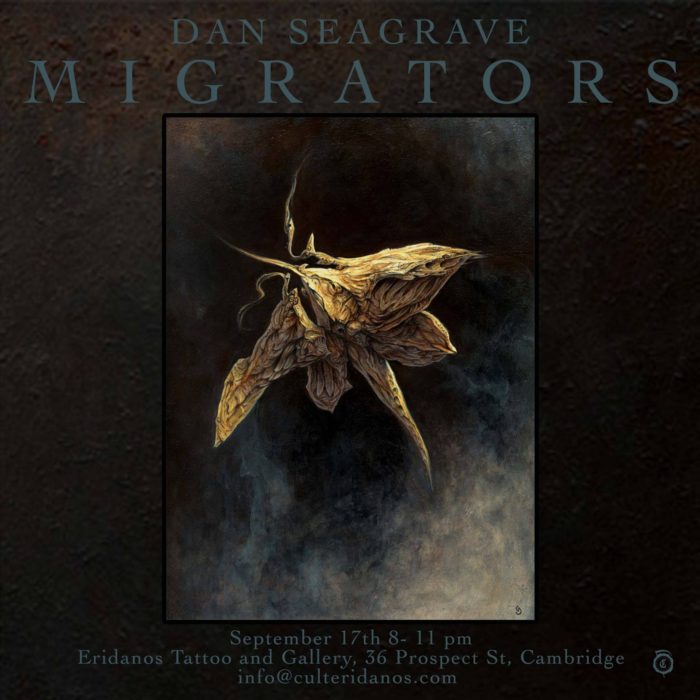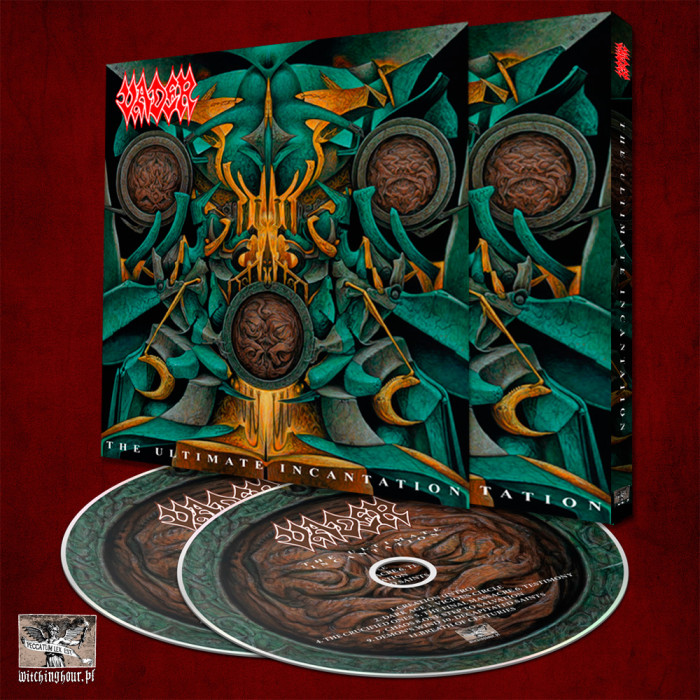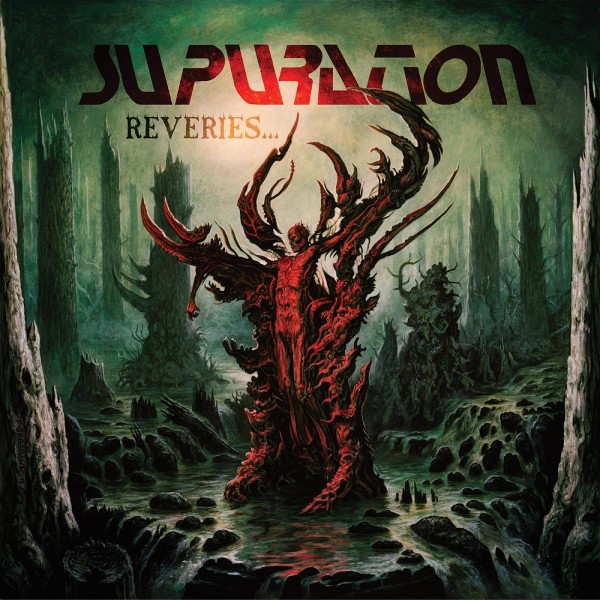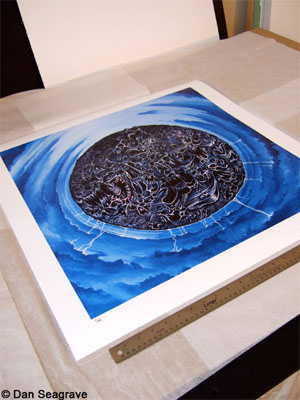
I like to believe that every death metal fan has seen a Dan Seagrave cover at one time or another. The man has painted the covers of some of the most influential death metal albums out there – we’re talking Morbid Angel, Suffocation, Entombed, Pestilence, Dismember, Gorguts and Carnage among others. Some of those covers have undeniably somewhat added to the spirit of death metal mythology.
Seagrave is a self-taught Brit, initially inspired by the rural and urban surroundings of his native Ravenshead (near Nottingham). That the young artist’s paintings would fit the imagery of death metal music makes sense when considering how his early influences included John Martin, a Romantic painter keen on apocalyptic and chthonic scenery, and M. C. Escher, a graphic artist interested in labyrinthine visual paradoxes. Top it off with some Vincent van Gogh, Leonardo da Vinci and early sci-fi films, like Alien, and the road to metal doesn’t seem entirely unlikely. Seagrave is nevertheless (and hardly surprising) more into architecture than other visual arts:
I like to see the layers of history in buildings, things like old signs or hand painted fading billboards – that kind of thing, and a little bit of seedy urban decay.
The typical Seagrave painting these days often seems to delve in a sea of thorns or a mess of jagged bark that’s come alive in some decrepit, chaotic universe. Some of his works are, by contrast, highly symmetrical pieces (think The Ultimate Incantation or Like an Ever-flowing Stream). In all his works, however, there’s a penetrating attention to detail. You can spend an awful lot of time discovering all the elements of the cover of, say, Effigy of the Forgotten.
Seagrave’s early paintings used gouache paint, which, while rather dull, is more tolerant of the meticulous. Whereas these early works are reminiscent of morbid still lifes, his more recent paintings – mostly painted with acrylics – experiment more with gnarly shapes, twisted movements and vertiginous perspectives.
Seagrave painted a lot of cover art from 1988 to 1994, more or less until the advent of computer graphics (and the death of a lot of underground metal). He prefers to work instinctively and hardly uses any reference material. He is, as he expresses it, “trying to convey”. Seagrave’s legacy should indeed remind us that real paintings pertain more to the authenticity of metal culture than any Photoshop production:
I did around 40 covers, computer graphics were cheaper alternatives, but I think paintings are far more interesting to look at. And people realize that computer art is as different to painting as photography, it’s simply another medium which is why things are beginning to level off again.
5 CommentsTags: album covers, dan seagrave






